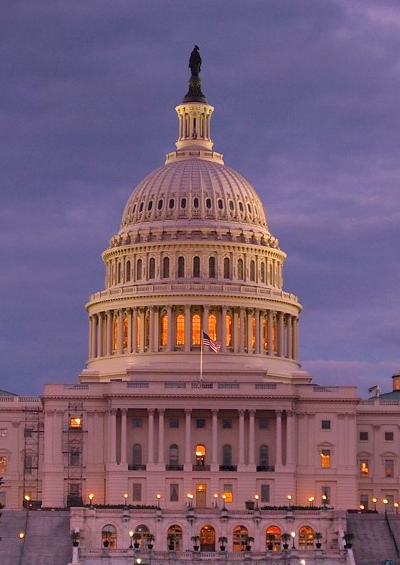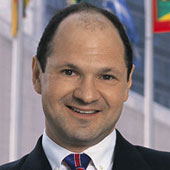Wall Street and Trump: Two Erratic Forces, Acting in Sync
U.S. stock prices have exhibited a pattern of behavior as erratic as that of the U.S. commander in chief.
June 11, 2019
Donald Trump likes to point to rising stock prices on Wall Street as a measure of “his” economic miracle. In reality, U.S. stock prices have exhibited a pattern of behavior as erratic as that of the U.S. commander in chief.
While the Dow Jones Industrial Average is trading where it was at the start of 2018, it has fluctuated wildly in recent months. Sharp declines and rallies, often in the course of a single trading session, have become the norm.
At the end of last year, the market dropped 20% from its peak, meeting the definition of a bear market. Then in the first quarter of 2019, it clawed back most of the losses. Then, stock prices started to weaken once more. Now there is another rally — but one wonders for how long?
Actually, the erratic behavior of Wall Street’s key indices started earlier — notably, on the night in November 2016 when Donald Trump was elected. The initial reaction when the voting results started to pour in was highly negative.
$10 trillion of wealth created
Then, there was a huge reversal. Stock prices surged and by the time the Dow set its all-time high at nearly 27,000 last year, the U.S. stock market added one-third of its value. Thus, in just two years, a whopping $10 trillion of wealth has been created by Wall Street.
The gains, moreover, came not from a low point — such after the 2008-09 sell-off — but from record highs.
The Dow is an index of 30 bluest of the blue chips, the largest and the most solid U.S. companies with tried and true business models and extensive track records. They are also the most thoroughly analyzed companies in the world, with literally thousands of analysts poring over their balance sheets.
Stock prices represent the discounted present value of all dividends the company will pay out in perpetuity. In other words, it is a reflection of what investors think is going to happen to a given company’s profitability in the future.
A seismic shift?
Obviously, there had to be some kind of a seismic shift in the overall economy to warrant such a dramatic repricing of those 30 companies and the creation of all that wealth. Was the election of Trump and the appointment of his cabinet such a seismic shift?
The Trump administration did loosen a number of regulations and environmental protection rules, especially those that had been put in place under Barack Obama. That made companies more profitable and cut the red tape and associated expenses.
However, these were marginal changes adding a piddling amount to the corporate bottom line. Moreover, U.S. regulations had been far less onerous than in most other rich industrial countries. In addition, U.S. multinationals continue to function successfully under more restrictive regulatory regimes abroad, for instance in Western Europe.
The Trump tax cut scam
And then there was the Trump tax cut. It has always been a scam, since it put money into the hands of corporations and the very rich, doing very little for the real economy. Recent studies confirm that it provided no boost to investment or consumption, just a short-term infusion of liquidity.
So why does the U.S. stock market sustain its value? Why has it been so resilient, with corrections proving to be short-lived and followed by new rallies?
The answer may lie in the nature of pyramid schemes. Sergei Mavrodi, who set up a massive pyramid scheme in Russia just as the Soviet Union collapsed, argued that his business model was workable.
His MMM pyramid could have gone on paying dividends to existing investors forever — as long as his well-publicized success brought in new investors and confidence in his scheme endured. But when the Russian government moved in, it undermined confidence and the whole thing collapsed.
The nature of pyramid schemes
It is a spurious argument, but it is not without merit. Large new inflows could continue to buoy the scheme, and if the government or some other respectful entity pledged to back it, it could have gone on for a very long time. As to the long term, John Maynard Keynes did once say that in the long run we’re all dead.
The world economy, fronted by the U.S. economy and underpinned by the U.S. dollar and dollar-denominated financial assets, has been in a bubble stage ever since it came out of the 2008-09 Great Recession.
This is not to say that the real economy is a bubble: Industry produces goods, businesses provide services, farmers grow food and the technology revolution powers ahead at an accelerating pace. But in many asset classes, there are massive — and ultimately unsustainable — bubbles.
Like other pyramid schemes, they go on because government entities give them their imprimatur and infuse liquidity. Another successful swindler Bernie Madoff claimed after the incomplete financial regulations had been enacted following the 2008 global financial crisis that the whole government was a Ponzi scheme.
Now there is a bubble in U.S. stocks and in international bond markets, where yields are often negative, meaning that governments are paid to pile on debt.
In real estate markets in key metropolitan areas, property is overpriced by trillions of dollars. A collapse of the massively overbuilt New York market alone would send shockwaves through the global financial system.
And that’s a bubble that Donald Trump personally has a decided interest in keeping from popping.
So many bubbles in the U.S.
There is a corporate debt bubble, a consumer debt bubble and a student loan bubble in the United States. There is even a bubble in the oil market, despite the fact that oil prices have dropped by some 50% since 2010-14.
And, remarkably, there is a labor market bubble: A record low unemployment rate principally achieved with the help of still low labor force participation.
Other key ingredients are the sea of low-paying service sector jobs and the Uber-style gig economy, both of which aren’t allowing people to earn their cost of living. That bubble was in evidence before the financial crisis, and all those jobs evaporated within a few months. Now the situation is far worse.
These U.S. bubbles — the corporate debt bubble, a consumer debt bubble, a student loan bubble and a labor market bubble — are interlocking. If one bursts, it could trigger the bursting of others.
Donald Trump, bubble maker
Trump’s policies have acted to protect the bubbles and to inflate them further. The tax cut infused liquidity into financial markets and high-end real estate.
Even his reckless trade wars have been beneficial for stocks and bonds. Fearing global economic and political turmoil, investors are piling into the safest assets, which are dollar-denominated securities, especially U.S. Treasuries.
Meanwhile, concern about a possible global economic slowdown is making the U.S. Federal Reserve nervous. It has hinted that it may cut interest rates, spurring a rally on Wall Street last week. The Fed is acting as a government guarantor of a pyramid scheme.
“If something cannot go on forever, it will stop,” said conservative economist Herbert Stein back in the 1970s. Accordingly, the bubble economy will inevitably come to an end. Bubbles are bicycle-like phenomena: They tumble when they stop moving — and the stock market has not moved up for a year and a half.
Conclusion
The bursting of a number of interconnected bubbles may change the configuration of the global economic and political system. As if that weren’t bad enough, Donald Trump is piling on. By antagonizing America’s allies and friends, and initiating spurious trade conflicts, Trump is laying the groundwork for America’s failure as a world leader.
It is an interesting sign of the times that the bitcoin, which many economists believe is inherently worthless, refuses to go away. After dropping sharply in late 2018, it has rallied this year.
Possibly, this is another bubble, but it may also be a troubling indicator for the future of the U.S. dollar as a global reserve currency.
Takeaways
The erratic behavior of Wall Street’s key indices started on the night in November 2016 when Donald Trump was elected.
The Trump administration loosened regulations and environmental protection rules. That made companies more profitable.
US bubbles -- corporate debt, consumer debt, student loan and labor market -- are interlocking. If one bursts, it could trigger others.
By antagonizing America’s allies and friends, and initiating spurious trade conflicts, Trump is laying the groundwork for America’s failure as a world leader.
Read previous

Global Democracy
Disgruntled Democracies
June 8, 2019
